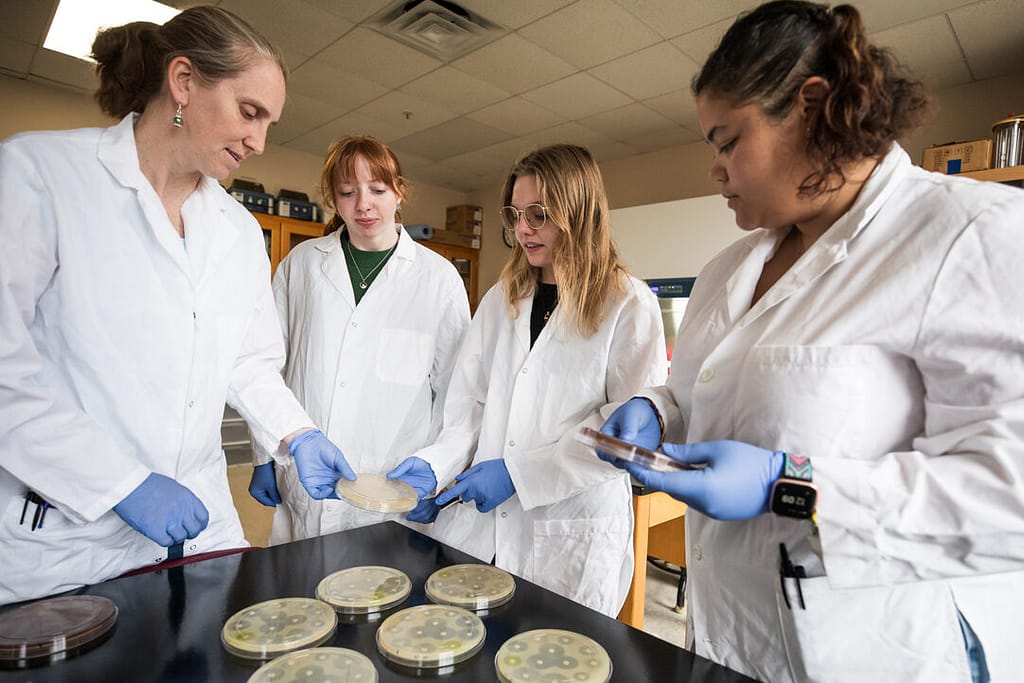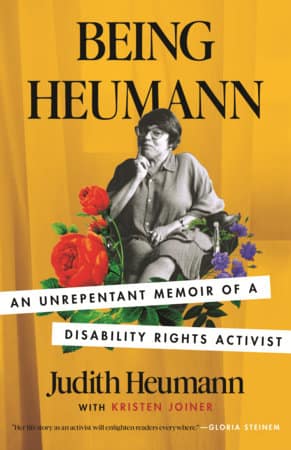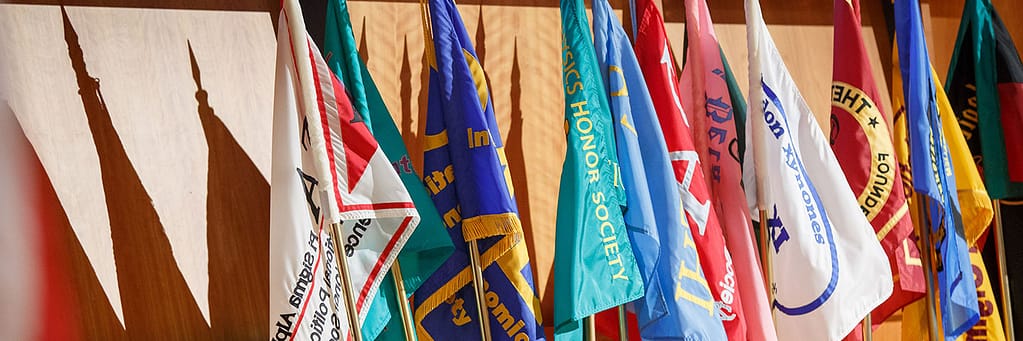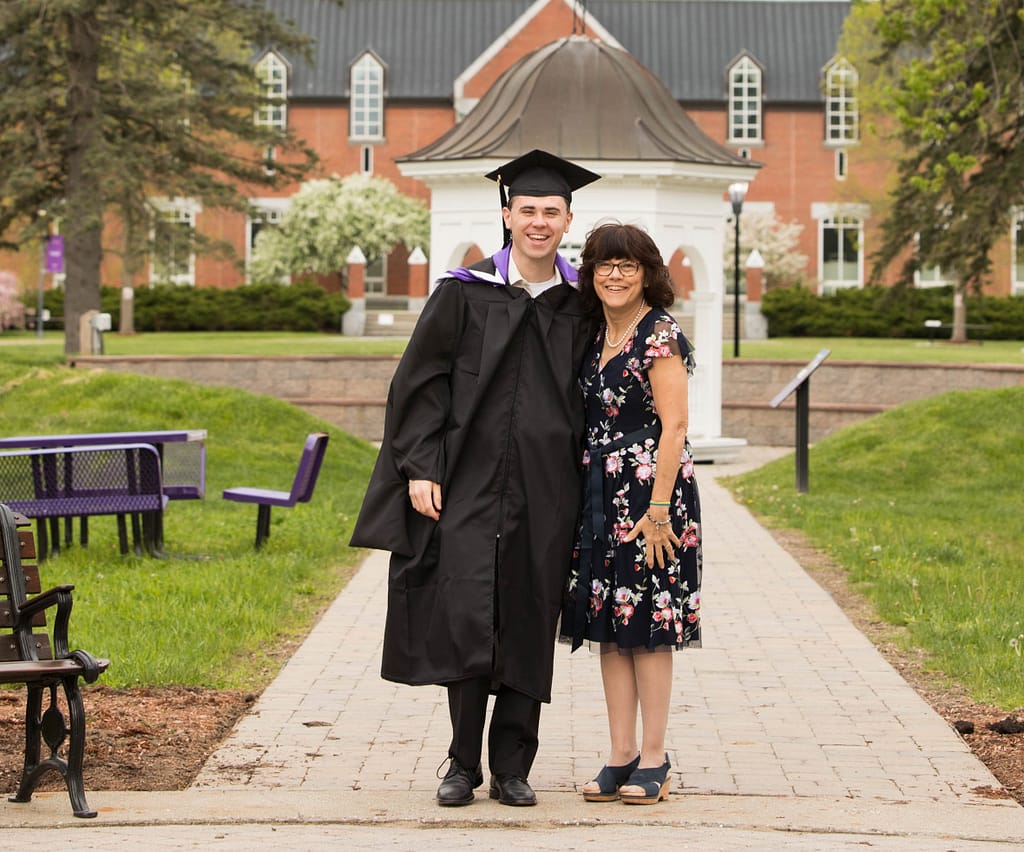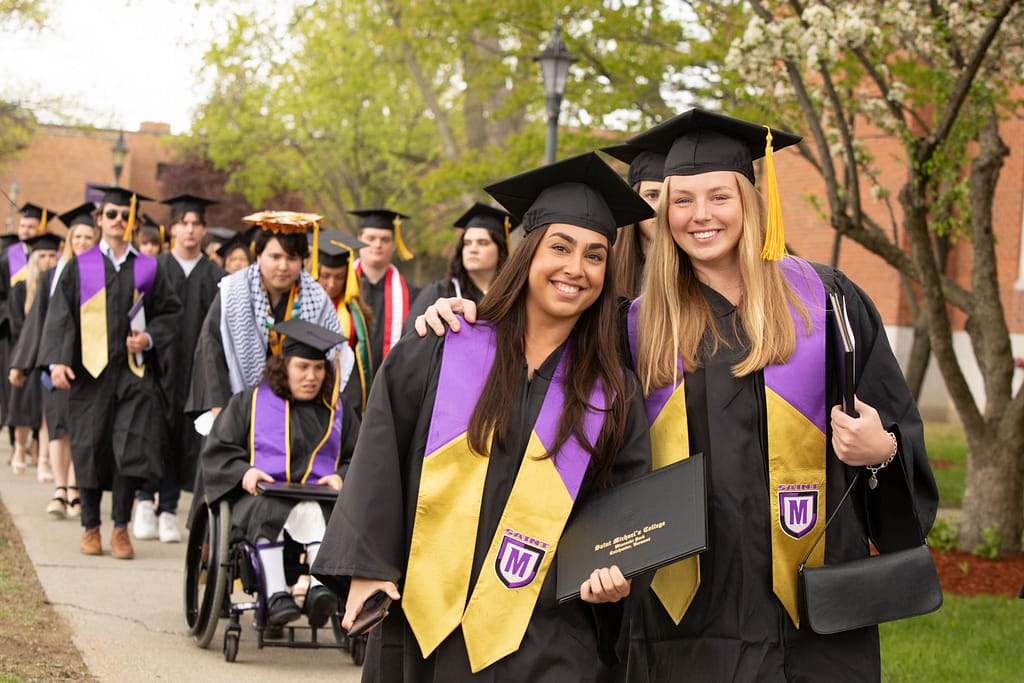Art activist makes the invisible visible at Saint Michael’s College
A small memorial of a large handmade cross surrounded by several smaller crosses now stands in the middle of Saint Michael’s campus as a reminder of migrants who died while fleeing their countries and trekking across the southern U.S. border – and the humanity that often gets forgotten when telling their stories.
The memorial is thanks to Tucson-based artist and activist, Alvaro Enciso, who led two workshops in the College’s MakerSpace on October 23 to help the community create the crosses, and he later discussed his own work in Arizona near the border with Mexico. The crosses represent a project he began working on 11 years ago called “Donde Mueren los Sueños” or “Where Dreams Die” to mark the locations where migrants have perished in the desert.
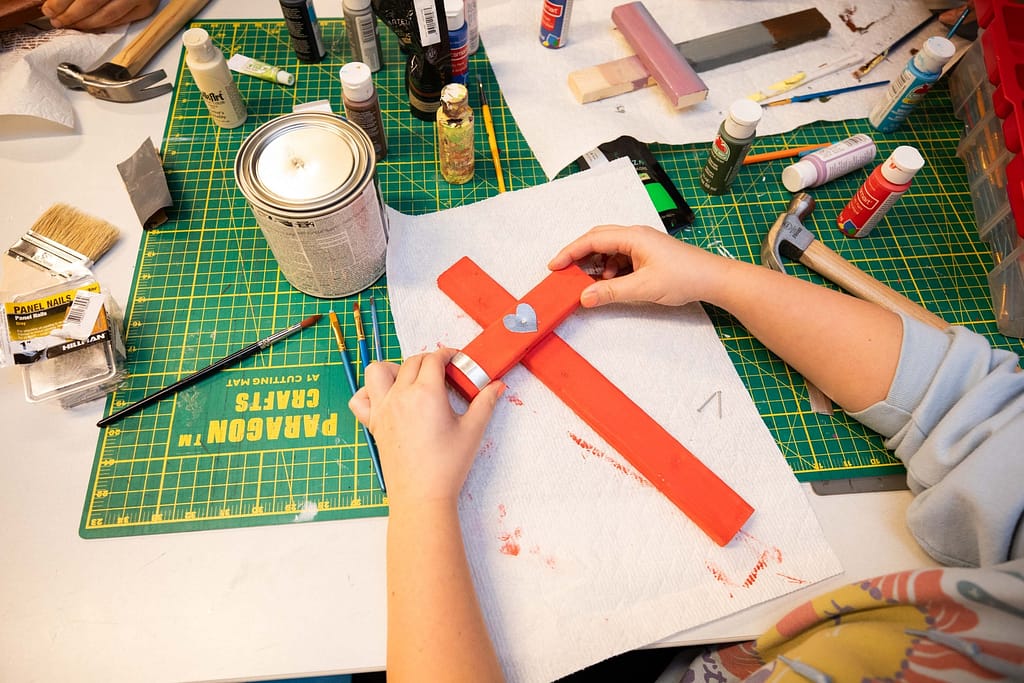
(Photo by Cat Cutillo)
Allison Cleary, who is Director of the Writing Center, Senior Instructor for Digital Media and Communications, and Coordinator for Post-Grad Volunteer Service, brought Enciso to campus after learning about his work through alum MaryJoan Picone ’87. Cleary introduced Enciso during his talk on campus and explained that the border between Arizona and Mexico is 240 miles of desert—the Sonoran Desert. Cleary said that more than 4,000 people have died trying to make the journey across the relentless heat and emptiness in the Sonoran Desert—the hottest desert in the country.
“It is the strategy of the Border Patrol to send them through the most difficult parts of the desert, knowing in advance some people are going to die and that is going to be the deterrent,” Enciso said. “It didn’t work because they never understood the desperation of being poor, the desperation of having no other choices in life but to come here. Because this is where you find the American Dream.”
Enciso has brought his project to college campuses across the country. Inside Saint Michael’s MakerSpace studio, he asked participants to build a small cross and create a design that would honor a migrant or someone in their own lives. He wanted people to think about what colors they would use and explained he would be building a larger turquoise cross—a color that doesn’t appear frequently in the Vermont landscape.
“I’m bringing the southwest—the borderlands— here,” he said. “It’s about giving some visibility to something in your own life or to what is happening right now in the southern border and what is beginning to happen to the northern border.”
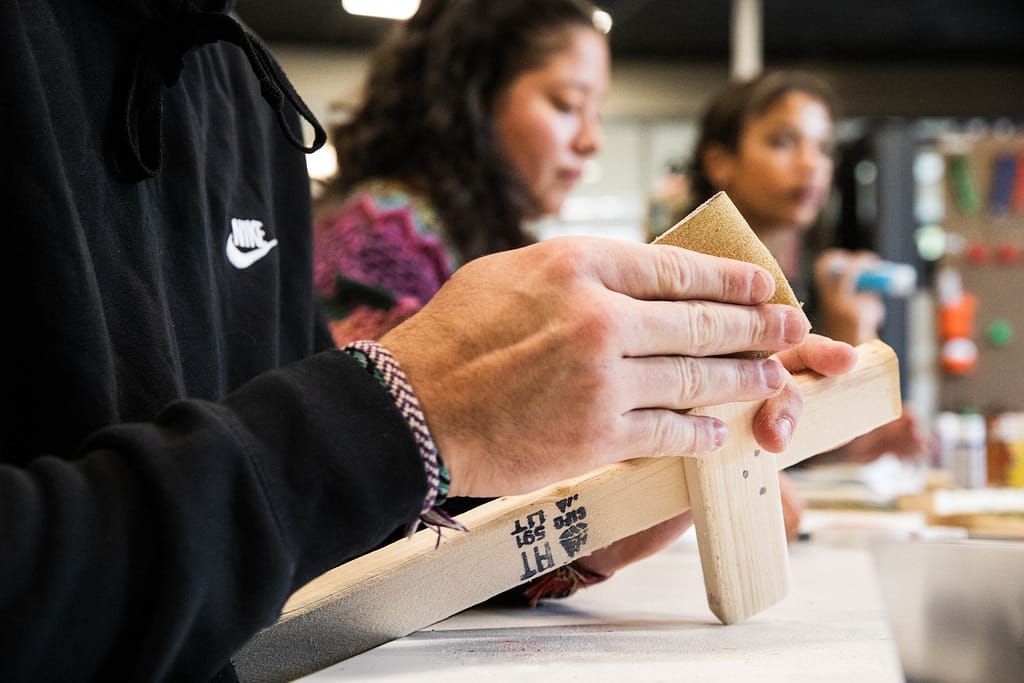
(Photo by Cat Cutillo)
Honoring stories through art
Hammering filled the MakerSpace as students, faculty and staff who attended the workshop got to work, nailing their crosses together. Participants painted, wrapped wire and wrote messages to personalize their crosses.
Chicha Romain ’25 said his cross would be a testament to love. He clung to Encino’s words that when we lose someone, “there’s always going to be an empty chair.”
“I’ve been dealing with something for a minute and making this makes it more physical and tangible as a way to deal with my emotions and express some of the compassion and love I still have in my heart,” Romain said. He said he chose colors that he thought looked best on himself as well as his loved one.
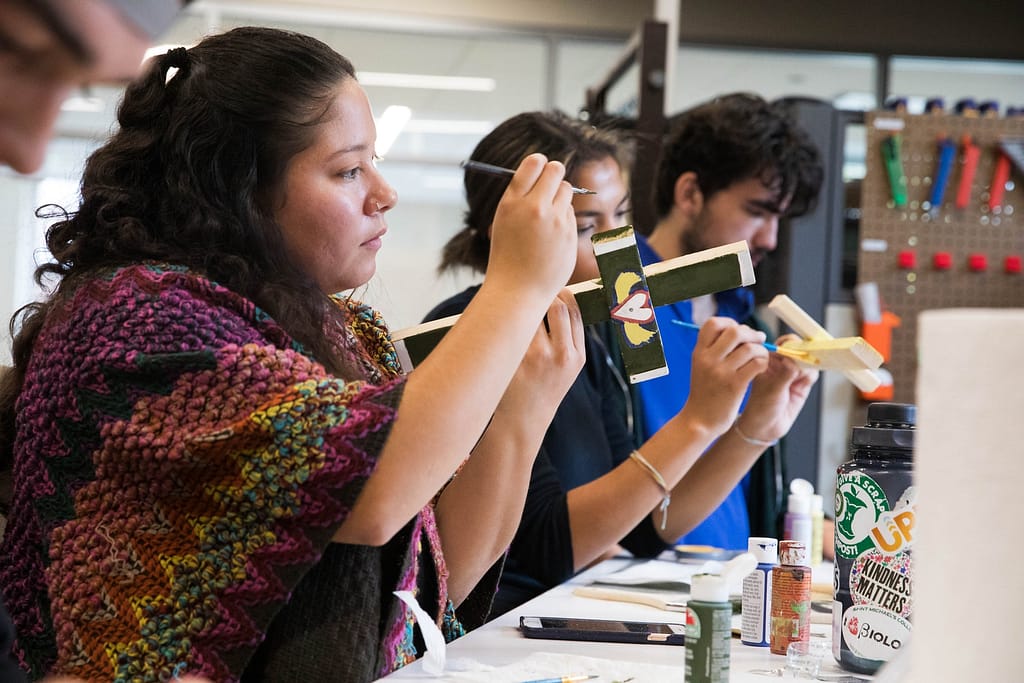
Vicky Castillo (Photo by Cat Cutillo)
Vicky Castillo ’20, Assistant Director of MOVE, created a cross with a heart in the center to honor migrants. Growing up, she heard stories from her father—who is from Mexico— of friends or distant relatives who lost their lives trying to cross the desert.
“Sometimes you see the flaming heart or heart with wings or heart with a crown in a lot of Latin countries as a part of their culture,” Castillo said. “I wanted that in the center to honor all migrants.”
Castillo said that there’s a common misconception that migrants are only coming from Mexico, when they’re coming from Central and South America as well.
“I wanted something that could honor all kinds of cultures but still have a semblance of connection between them,” she said.
After people made their cross, they had to decide where it would go. Enciso would be planting his large turquoise cross in the center of campus to honor migrants. People could choose to plant their cross next to his, give it to someone else, leave it as a found object—the options were endless.
“Think of the cross as migration. This object may migrate from one place to the other,” he said.
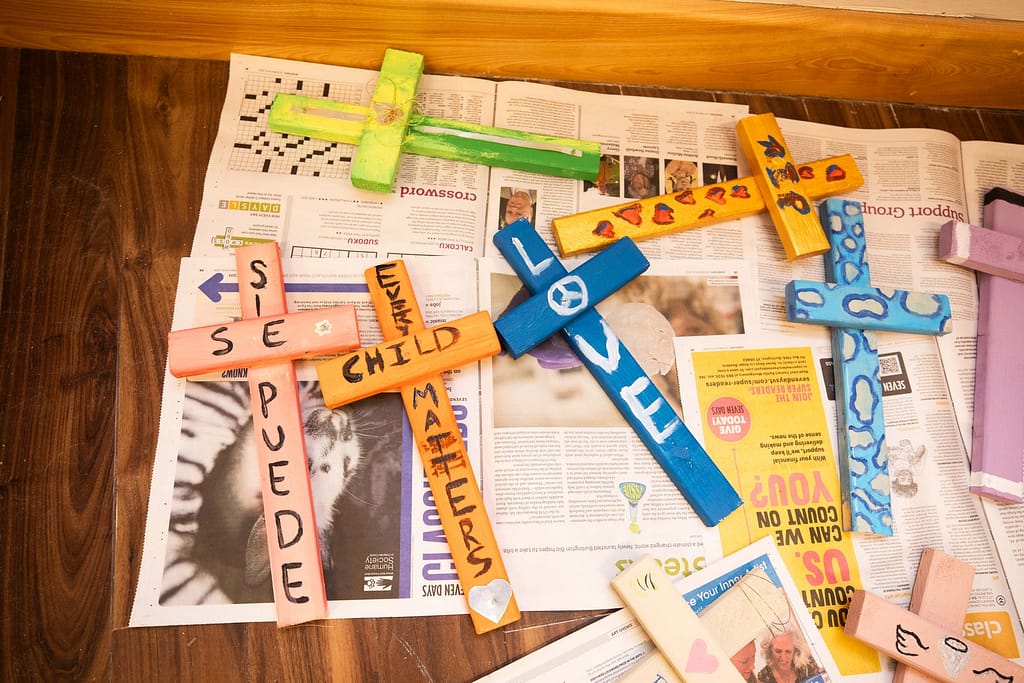
(Photo by Cat Cutillo)
‘We are the Stories that we tell’
“What I do out there in the desert is the story of my life,” Enciso told a room of campus community members gathered for his artist talk later in the day. “I’m telling my own story. We are the stories that we tell.”
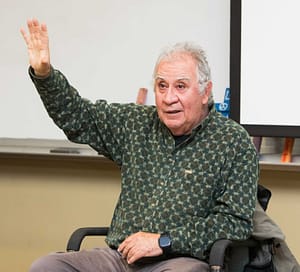
(Photo by Cat Cutillo)
His own story of migration began in 1965 when he left his homeland of Colombia to move to New York City. He was the first person in his family to graduate high school and wanted to pursue more education in the United States. Initially he had housing but lost it soon after arriving and was left homeless in New York City. He said one day he walked into a church and prayed for help. Two months later, he received a letter at a relative’s house that he was being drafted into the U.S. Army.
“I didn’t have any skills and barely spoke English so the infantry was the only place they could find for me,” Enciso said. The army gave him a bed, clothing and three meals a day.
He spent 14 months in the infantry in Vietnam. When he came back to the U.S., the GI Bill allowed him to go to school. He drove a taxi at night and mopped floors during the day while he earned his BA in Anthropology. He later also earned graduate degrees in Anthropology, Latin American Studies and Latin American Contemporary Literature. He was soon offered a job in Washington, D.C. with the federal government where he worked for 20 years.
After two decades, Enciso wanted something else, he said. He took a leap of faith to become an artist.
“I remember that as a kid I used to draw—mostly airplanes. I was drawing the airplanes that were going to take me out of poverty, out of Colombia,” Enciso said.
His paintings began to sell to wealthy people decorating their homes, but Enciso wanted his art to have a deeper impact.
“One day I said the first leap of faith I took worked so I’m going to try it again. I’m going to move to the border to do a project that is going to complete the circle of migration for me,” Enciso said of his decision to move to Tucson, Arizona, 13 years ago.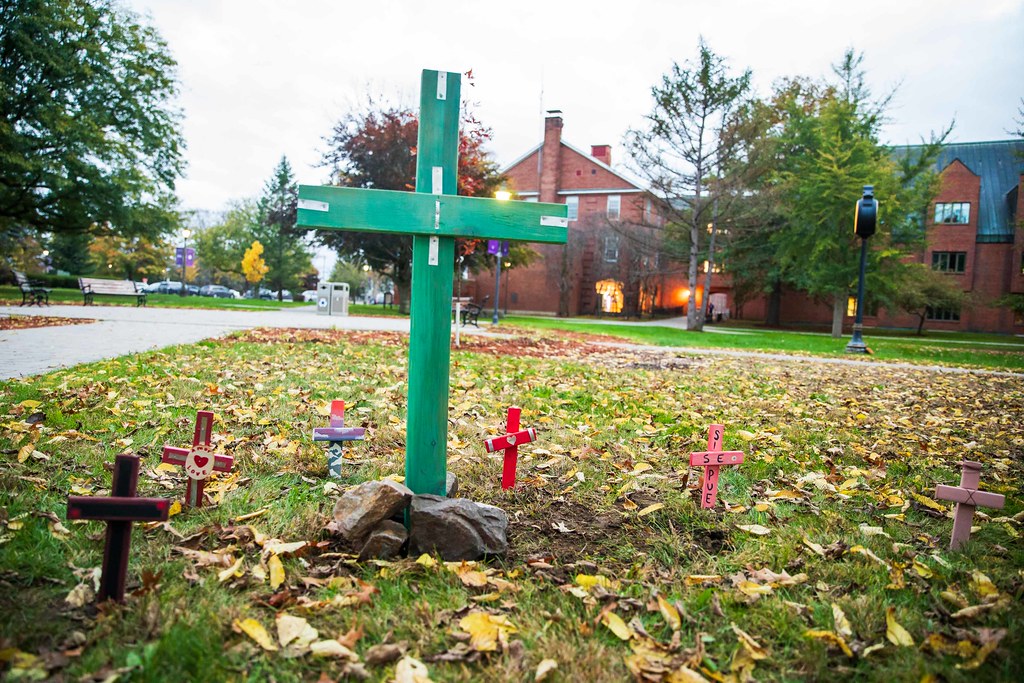 (See a gallery of photos by Cat Cutillo)
(See a gallery of photos by Cat Cutillo)
Spreading the word
After moving to Tucson, Enciso saw a map marked with red dots that showed all the spots where migrants had died. The map was completely covered with red. Over the past 20 years, thousands of migrants have been found dead and several thousand more families are still looking for relatives who came to Arizona to try to cross the border and disappeared out in the desert.
“The thing that got to me was the fact that very few people knew about people dying out in the Sonoran Desert—even people out in southern Arizona,” Enciso said.
The medical examiner keeps the exact GPS locations where migrant bodies were found and Enciso said he used to go and lie on the ground in those exact locations looking for inspiration. He would spend the night sometimes. Through this process, he came up with a way to honor the migrants who had died: He would create crosses and plant them in those locations.
“My idea was to alter the landscape, to show something that didn’t belong there…to make the invisible, visible,” Enciso said. “Immigration is what we do as humans, as animals. We migrate in order to survive.”
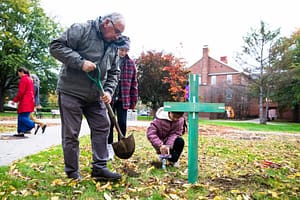
(Photo by Cat Cutillo)
He added, “We have this idea that the American Dream is going to solve our economic problems. Well, the American Dream, it turns out, is nothing more than a myth…We come looking for the American Dream, a dream that does not exist.”
Enciso’s project has garnered attention in the media in publications including Democracy Now, the New York Times and Reuters. More recently, he’s focused on visiting college campuses.
“You guys are the future,” he said at Saint Michael’s. “Whether you like it or not, you are my collaborators. You will take over one day.”
At sunset, a dozen people gathered in the center of Saint Michael’s campus to plant Encino’s large cross and seven smaller crosses that were created earlier that day. People shared words and silence to honor migrants who had died and their families. As if called on command, a natural migration of geese suddenly flew overhead and serenaded the group with a symphony of honking.
“See, we’re having a migration right now,” Enciso said.
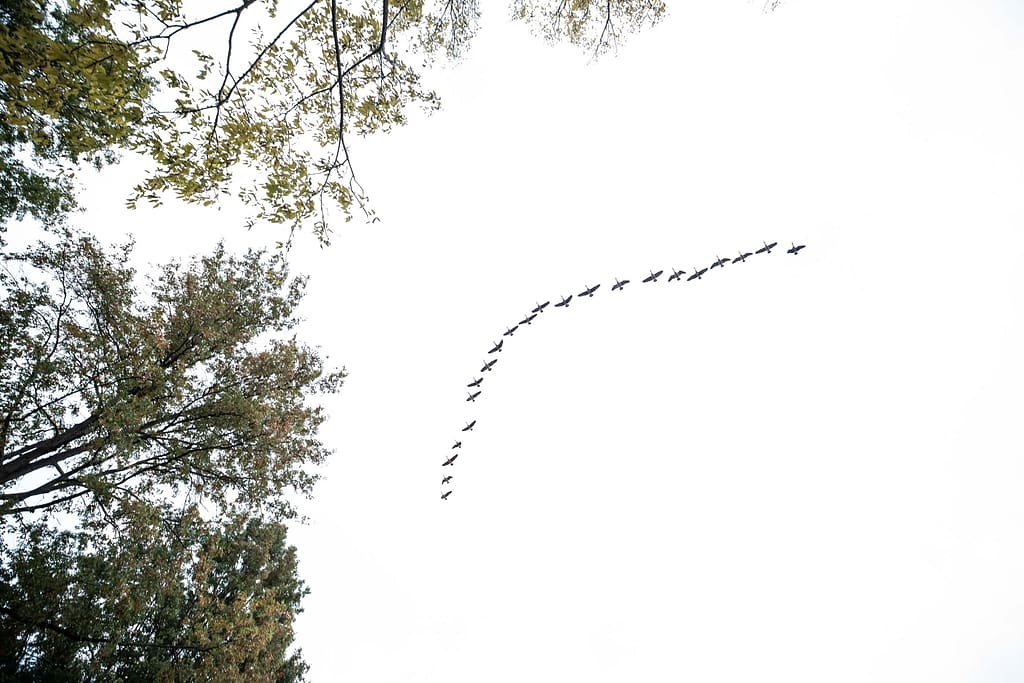
Flocks of geese migrating flew above. (Photo by Cat Cutillo)
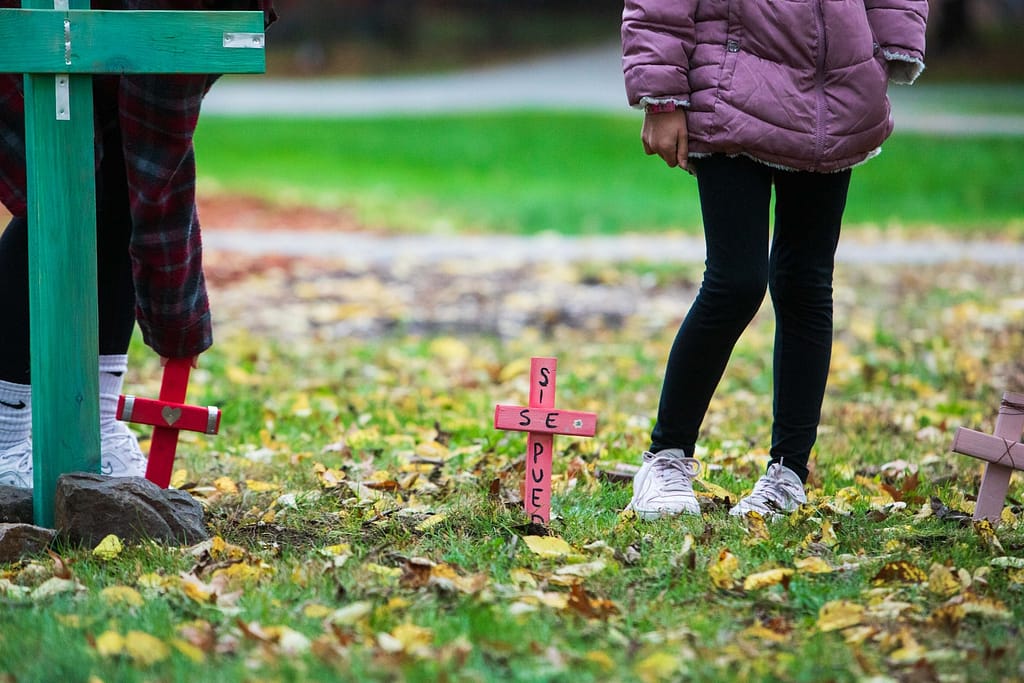
(Photo by Cat Cutillo)
